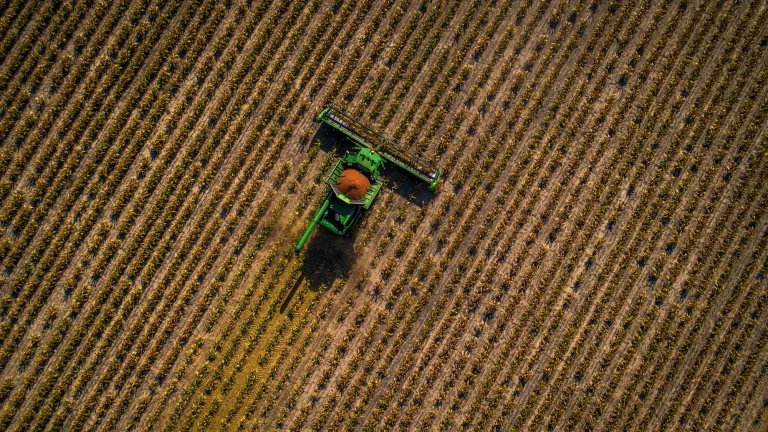Professional Guide to Evaluating the Market Value of Livestock Farming Operations in Queensland
Queensland’s livestock industry represents one of Australia’s most significant agricultural sectors, encompassing vast cattle stations, intensive feedlot operations, and specialized breeding enterprises that contribute substantially to the state’s agricultural economy. The diverse range of livestock operations across Queensland’s varied climatic zones creates unique valuation challenges that require specialized expertise and comprehensive understanding of regional market dynamics. For property owners, investors, and agricultural professionals, evaluating the market value of livestock farming operations in Queensland demands sophisticated analytical approaches that account for operational complexity, regional variations, and evolving market conditions.
At Agribusiness Horizons, we recognize that livestock property valuations require deep understanding of both agricultural economics and operational factors that drive long-term performance and market appeal. Our specialized team combines extensive Queensland market knowledge with proven valuation methodologies to deliver accurate assessments that support strategic decision-making across diverse livestock enterprises. This comprehensive guide examines the essential approaches, key considerations, and market factors that shape professional livestock property valuations throughout Queensland’s diverse agricultural regions.
Queensland’s Livestock Industry Landscape
Queensland’s livestock sector encompasses extraordinary diversity in scale, operational systems, and regional characteristics that create distinct market segments requiring specialized valuation approaches. The state’s geography spans from tropical regions in the far north supporting extensive cattle operations to temperate zones in the south accommodating intensive dairy and beef finishing enterprises, each presenting unique assessment challenges and market dynamics.
The evolution of Queensland’s livestock industry has incorporated advanced breeding programs, improved pasture management systems, and sophisticated infrastructure development that significantly enhance property values while creating competitive operational advantages. Modern livestock operations increasingly integrate technology systems including remote monitoring, precision feeding, and genetic management programs that add substantial value while requiring specialized assessment expertise.
Regional climate variations across Queensland create distinct operational characteristics and risk profiles that significantly impact property valuations and market positioning. Properties in higher rainfall coastal areas typically support different livestock systems compared to arid inland regions, necessitating region-specific valuation approaches that reflect local conditions and market dynamics.
The state’s livestock processing infrastructure and export facilities provide strategic advantages for properties with convenient market access, while remote locations may require different valuation considerations reflecting transport costs and marketing constraints that affect operational profitability and long-term sustainability.
Fundamental Valuation Methodologies
Income Capitalization Approach
Income-based valuation for livestock operations requires comprehensive analysis of sustainable earning capacity considering carrying capacity, production systems, and market positioning factors that drive long-term profitability. This methodology demands thorough understanding of livestock productivity cycles, seasonal variations, and management strategies that optimize operational performance while maintaining land condition and animal welfare standards.
Sustainable stocking rate determination forms the foundation of income-based valuations, requiring professional assessment of pasture productivity, water availability, and grazing management systems that support optimal livestock performance. Accurate carrying capacity assessment becomes essential for projecting realistic income streams while ensuring environmental sustainability and operational longevity.
Revenue analysis must encompass all income sources including livestock sales, breeding services, agistment arrangements, and ancillary enterprises that contribute to overall operational profitability. Diversified revenue streams often enhance property stability while providing operational flexibility during challenging market conditions or seasonal variations.
Operating expense evaluation covers feed costs, veterinary expenses, labor requirements, and infrastructure maintenance that affect net income generation and cash flow sustainability. Properties with efficient operational systems typically demonstrate superior profitability while requiring lower ongoing investment for competitive performance maintenance.
Comparative Market Analysis
Livestock property market analysis Queensland requires extensive databases of comparable transactions and sophisticated understanding of how property characteristics affect relative values and market positioning. Successful comparative analysis demands careful adjustment for differences in scale, location, infrastructure quality, and operational capabilities that significantly impact property valuations and buyer appeal.
Transaction analysis must account for varying sale conditions, strategic motivations, and financing arrangements that may influence reported prices and complicate direct comparison with current market conditions. Professional market intelligence becomes essential for interpreting transaction data while developing accurate valuation benchmarks that reflect current market realities.
Regional market dynamics create distinct performance patterns across Queensland’s diverse livestock areas, with established agricultural regions often demonstrating more stable valuations compared to frontier areas offering higher growth potential but increased operational risks and market uncertainties.
Adjustment methodologies for property differences require comprehensive understanding of how infrastructure quality, water security, genetic programs, and management systems contribute to operational efficiency and competitive positioning within regional markets.
Asset-Based Valuation Considerations
Infrastructure assessment represents a critical component of livestock property valuations, encompassing cattle yards, fencing systems, water infrastructure, and feed storage facilities that directly impact operational efficiency and property utility. Modern infrastructure often commands premium valuations while reducing immediate capital investment requirements for new owners.
Land resource evaluation addresses soil quality, pasture composition, and topographical characteristics that affect carrying capacity and operational suitability for different livestock enterprises. Properties with superior natural resources typically demonstrate enhanced productivity potential while requiring lower input costs for competitive performance.
Water resource assessment encompasses both quantity and quality considerations including bore capacity, surface water access, and storage infrastructure that support livestock operations and provide drought resilience. Water security represents a fundamental value driver for Queensland livestock properties given the state’s variable rainfall patterns.
Genetic asset evaluation for breeding operations requires specialized expertise in livestock genetics, breeding program assessment, and bloodline valuation that can represent substantial portions of overall property value for specialized breeding enterprises focused on genetic improvement and premium market positioning.
Regional Assessment Considerations
Different regions across Queensland demonstrate distinct characteristics that significantly impact livestock property valuations and market dynamics. Understanding these regional differences enables more accurate assessment while supporting strategic investment decisions and operational planning approaches that optimize long-term performance.
Northern Queensland’s extensive cattle station operations typically feature large-scale properties with lower stocking rates but substantial development potential through improved infrastructure and management systems. These properties often require specialized assessment approaches that consider development costs versus enhancement potential and long-term market positioning.
Southern Queensland’s intensive livestock areas support higher stocking rates and more diverse operational systems including dairy, beef finishing, and specialized breeding programs. These regions typically demonstrate higher land values while offering enhanced infrastructure and market access advantages that support operational efficiency.
Central Queensland’s mining industry development has created both opportunities and challenges for livestock operations through its impact on land values, labor availability, and infrastructure development. Properties in mining-influenced regions require careful assessment of both agricultural potential and alternative use pressures that may affect long-term valuations.
Coastal versus inland location differences significantly impact operational costs, market access, and climate risk exposure that affect both immediate valuations and long-term investment attractiveness for different types of livestock enterprises and operational strategies.
Queensland Livestock Enterprise Valuation Matrix
| Enterprise Type | Primary Valuation Method | Key Value Drivers | Market Complexity | Infrastructure Requirements |
|---|---|---|---|---|
| Cattle Stations | Land + Income Analysis | Water Security, Carrying Capacity | Moderate | Basic Systems |
| Intensive Feedlots | Income Capitalization | Throughput, Feed Efficiency | High | Sophisticated Infrastructure |
| Dairy Operations | Income + Asset Analysis | Milk Production, Facilities | High | Specialized Equipment |
| Breeding Enterprises | Genetic + Income Value | Bloodlines, Reproduction Rates | Very High | Advanced Facilities |
| Finishing Operations | Market + Income Analysis | Growth Rates, Market Access | Moderate | Moderate Infrastructure |
This framework demonstrates the diverse approaches required for cattle property market analysis Queensland, highlighting how different livestock enterprises require specialized valuation methodologies based on their operational characteristics and market positioning.
Agribusiness Horizons’ Livestock Valuation Expertise
Our comprehensive approach to Queensland livestock property assessment combines deep regional knowledge with sophisticated valuation methodologies to deliver accurate market assessments that support informed decision-making. We understand the unique characteristics of Queensland’s diverse livestock regions while maintaining extensive databases of transaction information and operational benchmarks that support competitive market analysis.
Through our specialized valuation and financial analysis services, we provide detailed assessment of operational performance, infrastructure adequacy, and market positioning that enables clients to understand true property values while identifying enhancement opportunities. Our systematic approach addresses all value drivers while considering regional market dynamics and operational factors that affect long-term sustainability.
We maintain extensive networks of livestock specialists including veterinarians, geneticists, and pastoral consultants who provide additional expertise for complex assessment requirements and specialized operational evaluations. This collaborative approach ensures comprehensive analysis while addressing technical aspects that significantly impact property values and operational potential.
Our experience evaluating the market value of livestock farming operations in Queensland enables us to provide practical guidance on value enhancement strategies, operational optimization, and market positioning that supports superior transaction outcomes while protecting client interests throughout the assessment and transaction process.
Market Factors and Valuation Influences
Economic and Market Conditions
Commodity price cycles significantly impact livestock property valuations through their influence on operational profitability, cash flow generation, and investment demand from agricultural operators. Understanding price cycle patterns helps assess appropriate valuation timing while supporting strategic planning for property transactions and operational management.
Export market access and international trade relationships affect demand for Queensland livestock products, influencing both operational returns and property values through their impact on market opportunities and price realization potential. Properties with export market positioning often demonstrate enhanced valuations reflecting their operational advantages.
Interest rate environments influence property valuations through their impact on capitalization rates, financing costs, and investor demand patterns that affect market liquidity and pricing dynamics. Professional valuation analysis must consider current and projected interest rate conditions when developing appropriate assessment methodologies.
Economic development trends including infrastructure investment, population growth, and industrial development create regional opportunities and challenges that affect livestock property values through their influence on land use competition, labor availability, and operational costs.
Operational Performance Factors
Pasture management systems and land condition significantly impact carrying capacity and operational sustainability that directly affect property values and long-term viability. Properties with superior pasture management typically demonstrate enhanced productivity while requiring lower input costs for competitive performance.
Livestock genetic programs and breeding strategies create value through improved productivity, disease resistance, and premium market positioning that can substantially enhance operational returns. Properties with established genetic programs often command premium valuations reflecting their competitive advantages and market positioning.
Infrastructure condition and adequacy affect both immediate operational efficiency and future capital requirements that impact net property values and buyer appeal. Modern, well-maintained infrastructure typically commands premium valuations while reducing immediate investment requirements for new owners.
Management systems and operational efficiency directly impact profitability and risk management while affecting property marketability to different buyer segments. Properties with documented management systems often demonstrate enhanced valuations reflecting their operational sophistication and reduced management risk.
Technology Integration and Modern Assessment
Contemporary livestock operations increasingly integrate precision agriculture technologies, remote monitoring systems, and data management platforms that enhance operational efficiency while providing competitive advantages. These technology investments often represent significant value drivers requiring specialized assessment approaches and technical expertise.
Remote monitoring systems for livestock health, pasture conditions, and infrastructure performance provide operational advantages while reducing labor requirements and improving management decision-making capabilities. Properties with advanced monitoring systems typically demonstrate enhanced valuations reflecting their operational benefits.
Automated feeding systems and precision nutrition management create operational efficiencies that improve livestock performance while reducing labor costs and feed wastage. These systems require initial capital investment but often generate substantial operational benefits that enhance property values.
Genetic management software and breeding optimization systems support enhanced reproductive performance and genetic improvement programs that can significantly impact operational profitability and competitive positioning within premium market segments.
Environmental and Sustainability Considerations
Environmental stewardship and sustainable management practices increasingly influence livestock property valuations through their impact on regulatory compliance, market positioning, and operational costs. Properties demonstrating superior environmental management often command premium valuations while providing enhanced market appeal to environmentally conscious investors.
Carbon sequestration opportunities and regenerative grazing practices create additional revenue streams while supporting environmental objectives that align with evolving market expectations and regulatory frameworks. Understanding carbon market dynamics becomes important for evaluating these emerging value drivers.
Water conservation technologies and sustainable grazing management systems enhance long-term operational viability while reducing environmental impact and regulatory risk. Properties with advanced sustainability practices often demonstrate enhanced market positioning and reduced operational risks.
Biodiversity conservation and habitat management programs create additional value streams while supporting environmental stewardship objectives that enhance regulatory compliance and market positioning. These programs often attract government support while providing operational and market advantages.
Risk Assessment and Management
Operational risk factors including drought, disease, and market volatility require sophisticated assessment approaches that consider both immediate impacts and long-term sustainability implications. Properties with robust risk management systems typically demonstrate enhanced valuations reflecting their operational resilience and reduced risk exposure.
Climate risk assessment addresses both seasonal variations and long-term climate change impacts that may affect property productivity and operational sustainability. Properties with climate adaptation strategies often demonstrate superior long-term value retention while providing operational advantages during challenging conditions.
Market risk evaluation encompasses price volatility, demand fluctuations, and competitive pressures that affect revenue generation and investment returns. Properties with market diversification capabilities often provide enhanced risk management while maintaining competitive return potential.
Regulatory risk assessment addresses current compliance status and potential future regulatory changes that may impact operational costs, development potential, or competitive positioning. Properties with superior compliance records typically demonstrate reduced regulatory risk while providing operational advantages.
Future Trends and Market Evolution
Queensland’s livestock industry continues evolving through technology adoption, sustainability initiatives, and market development that create new opportunities while requiring ongoing adaptation of valuation methodologies and assessment approaches. Understanding these trends helps position properties for enhanced competitiveness while supporting strategic planning.
Precision livestock management systems enable more accurate performance monitoring and genetic optimization that can significantly enhance operational efficiency and return generation. These technology investments require initial capital commitment but often generate substantial long-term operational benefits.
Supply chain integration and direct marketing opportunities create potential for improved price realization and reduced marketing costs that enhance overall investment returns. Properties positioned for supply chain integration may attract premium buyer interest from vertically integrated operations.
Sustainability certification and environmental stewardship programs increasingly influence market positioning and buyer preferences while creating additional revenue opportunities through premium market access and government support programs.
Conclusion
Evaluating the market value of livestock farming operations in Queensland requires sophisticated analytical frameworks that account for the complex interplay between operational factors, regional characteristics, and market dynamics unique to the state’s diverse livestock sector. Professional assessment must integrate multiple valuation methodologies while considering both quantitative performance metrics and qualitative factors that drive long-term competitiveness and market appeal.
The diversity of Queensland’s livestock operations necessitates specialized expertise and region-specific knowledge that enables accurate assessment while supporting strategic decision-making for property transactions and operational planning. Understanding the evolving nature of livestock markets and operational technologies requires ongoing analysis and adaptation to maintain competitive assessment capabilities.
Consider these critical questions as you evaluate livestock property opportunities: How will climate variability and adaptation strategies affect long-term operational costs and productivity in your target regions? What role will technology integration and genetic improvement play in maintaining competitive advantages and market positioning? How can you assess properties to optimize both immediate operational returns and long-term capital appreciation while managing seasonal and market risks effectively?
At Agribusiness Horizons, our specialized expertise in livestock property assessment and comprehensive understanding of Queensland’s agricultural markets help clients develop accurate valuations and strategic insights that support successful investment outcomes. Contact our experienced team today to discuss how our livestock farm valuation expertise and market intelligence can enhance your property assessment requirements and investment decision-making processes.



